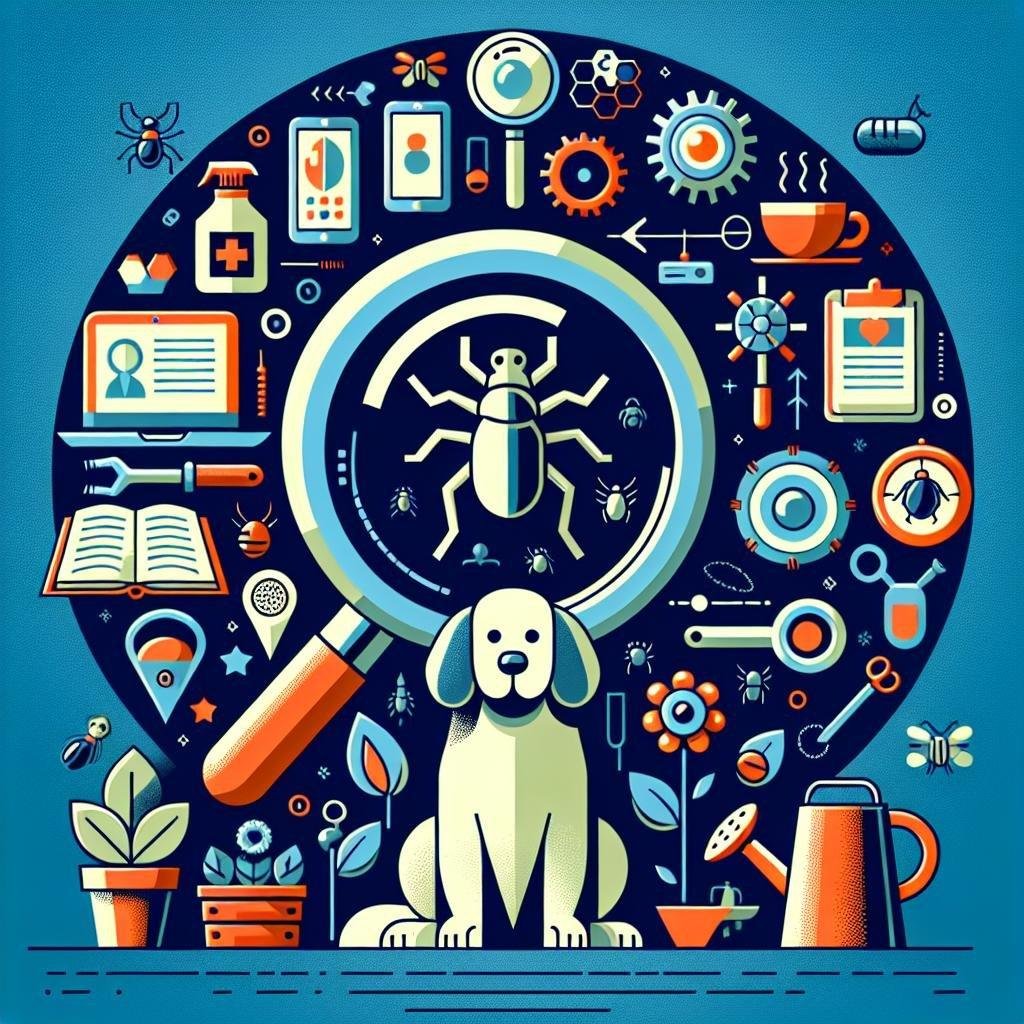
Check out our latest products
Introduction:
When it comes to caring for our furry friends,maintaining their grooming routine is just as crucial as everyday care. However, as pet owners, we must also be vigilant about protecting our companions from common pests like fleas and ticks, which can pose important health risks. Not only do these tiny intruders cause discomfort, but they can also led to more serious conditions if left unchecked. In this article,we’ll explore essential tips for flea and tick prevention during grooming sessions. Whether you’re considering a do-it-yourself grooming approach or seeking professional help, these strategies will help keep your pets pest-free and healthy throughout the year. Read on to discover practical steps you can take to ensure a safe and enjoyable grooming experience for you and your beloved animals.
Table of Contents
- Understanding Flea and Tick Life Cycles for Effective Prevention
- Grooming Techniques That Deter Fleas and Ticks
- Recommended Grooming Products for Maximum Protection
- Establishing a Routine to Maintain a Flea and Tick-Free Environment
- Key Takeaways
Understanding Flea and Tick Life Cycles for Effective Prevention
To effectively prevent flea and tick infestations, it’s essential to understand the life cycles of these pests. Fleas typically go through four stages: egg, larva, pupa, and adult. the adult fleas feed on their host, laying eggs that can fall off into the environment, leading to continued infestations. Eggs can hatch in as little as two days,while larvae develop by feeding on organic debris.Understanding this rapid cycle is crucial for timing your preventative measures.Likewise,ticks have a more complex life cycle involving larval,nymphal,and adult stages. They require a blood meal at each stage, which is critical in determining when to apply treatments.
During grooming, employing specific tactics can make a significant difference in flea and tick prevention. Here are some effective strategies:
- Regular Brushing: Use a fine-toothed grooming comb to remove fleas and ticks, paying close attention to neck, ears, and tail.
- Spot Treatments: Apply vet-approved topical treatments during grooming to target areas where fleas and ticks are likely to thrive.
- Bathing: Use flea and tick shampoos as part of the regular grooming routine, which can help kill and repel these pests.
- Inspection Checks: Conduct thorough body checks for any signs of pests or bites, ensuring rapid action can be taken if any are found.
grooming Techniques That Deter Fleas and Ticks
Incorporating effective grooming techniques into your pet care routine can substantially reduce the risk of fleas and ticks. Regular brushing is essential, as it not only helps to remove loose fur and dander but also allows you to inspect your pet’s skin for any signs of these unwanted parasites. Use a sturdy brush with fine bristles to effectively comb through your pet’s coat and focus on areas where fleas tend to hide, such as around the ears, neck, and tail. Additionally, consider scheduling regular baths with a flea-repellent shampoo, which can help to keep your pet’s skin clean and free of harmful pests. Here are some grooming strategies to consider:
- Brush Your Pet Frequently: Aim for at least once a week to remove pests and detect issues early.
- Use the Right Tools: Invest in flea combs and tick removal tools designed specifically for pets.
- Monitor for Signs: Always check for any unusual scratching or skin irritations during grooming sessions.
Along with brushing and bathing, using natural treatments can provide an extra layer of protection against fleas and ticks. Essential oils like lavender, peppermint, and cedarwood are known for their repellent properties. When diluted properly, these oils can be added to your pet’s grooming routine, either in a spray form or mixed with their shampoo. However, it is crucial to do a patch test first to ensure your pet does not have any adverse reactions. Moreover, maintaining a clean environment in your home and yard can prevent fleas and ticks from taking hold. Here’s a helpful table outlining common natural repellents:
| Natural Repellent | Usage |
|---|---|
| Lavender Oil | Mix with water and spray on coat—great for calming too! |
| Peppermint Oil | Combine with carrier oil and apply to skin for a refreshing scent. |
| Cedarwood oil | Add to shampoo or use in spray form—effective and pleasant! |
Recommended Grooming Products for Maximum Protection
Grooming your pet is an essential aspect of keeping them healthy, especially when it comes to preventing fleas and ticks. Invest in quality flea and tick shampoos that not only cleanse your pet’s coat but also provide long-lasting protection. Look for products containing natural ingredients like neem oil or cedarwood oil, known for their insect-repelling properties. Regular bathing with these specialized shampoos, combined with a thorough brushing, helps remove any hitchhiking pests and prevents infestations before they start. Here are some top-rated options:
- Flea and Tick Control Shampoo by Vet’s Best – Formulated with natural ingredients.
- Adams Plus Flea & Tick Shampoo – Kills fleas, ticks, and remains effective for days.
- Earth Animal No Hide Dream Dog Chews – An edible option that supports skin health.
In addition to shampoos, consider integrating flea and tick spot treatments into your grooming routine. These topical treatments provide a concentrated solution that targets pests and offers monthly protection. Look for easy-to-apply applicators that ensure even distribution across your pet’s skin. Also, make sure to maintain a flea and tick collar as an ongoing defensive measure. Check out the following products for reliable protection:
| Product Name | Type | Duration of Protection |
|---|---|---|
| Seresto Flea and tick Collar | Collar | 8 months |
| Frontline Plus Spot On | Topical Treatment | one month |
| PetArmor Flea and Tick Prevention | Spot Treatment | One month |
Establishing a Routine to Maintain a Flea and Tick-Free Environment
creating a consistent routine is vital for keeping your home and pets safe from fleas and ticks. Start by establishing a regular grooming schedule that includes brushing, bathing, and inspecting your pet. Aim for at least once a week,or more frequently during peak infestation seasons. additionally, make it a habit to wash your pet’s bedding and toys weekly in hot water to eliminate any lurking pests.Pair this with thorough vacuuming of carpets, rugs, and upholstery to reduce the chances of flea and tick populations thriving indoors.
On the environmental front, consider integrating natural deterrents within your home. Use essential oils known for their pest-repellent properties,such as lavender or lemongrass,in diffusers or diluted sprays around your living spaces.You can enhance your outdoor areas by regularly mowing the lawn and trimming shrubs to minimize habitats for these pests. Implementing a routine that incorporates both grooming and environmental care will significantly lower the likelihood of flea and tick infestations.
Key Takeaways
keeping your furry companions safe from fleas and ticks during grooming is crucial for their overall health and happiness. By incorporating these essential tips—such as regular baths with flea and tick prevention products, thorough brushing, and maintaining a clean grooming environment—you can ensure that both you and your pet can enjoy grooming sessions free from unwanted pests. Remember that prevention is always better than cure; a proactive approach will not only protect your pets but also create a more pleasant and effective grooming experience. Stay informed and prepared, and your pets will thank you with wagging tails and happy purrs! Feel free to share your own tips and experiences in the comments below—let’s keep our fur babies safe and healthy together!










